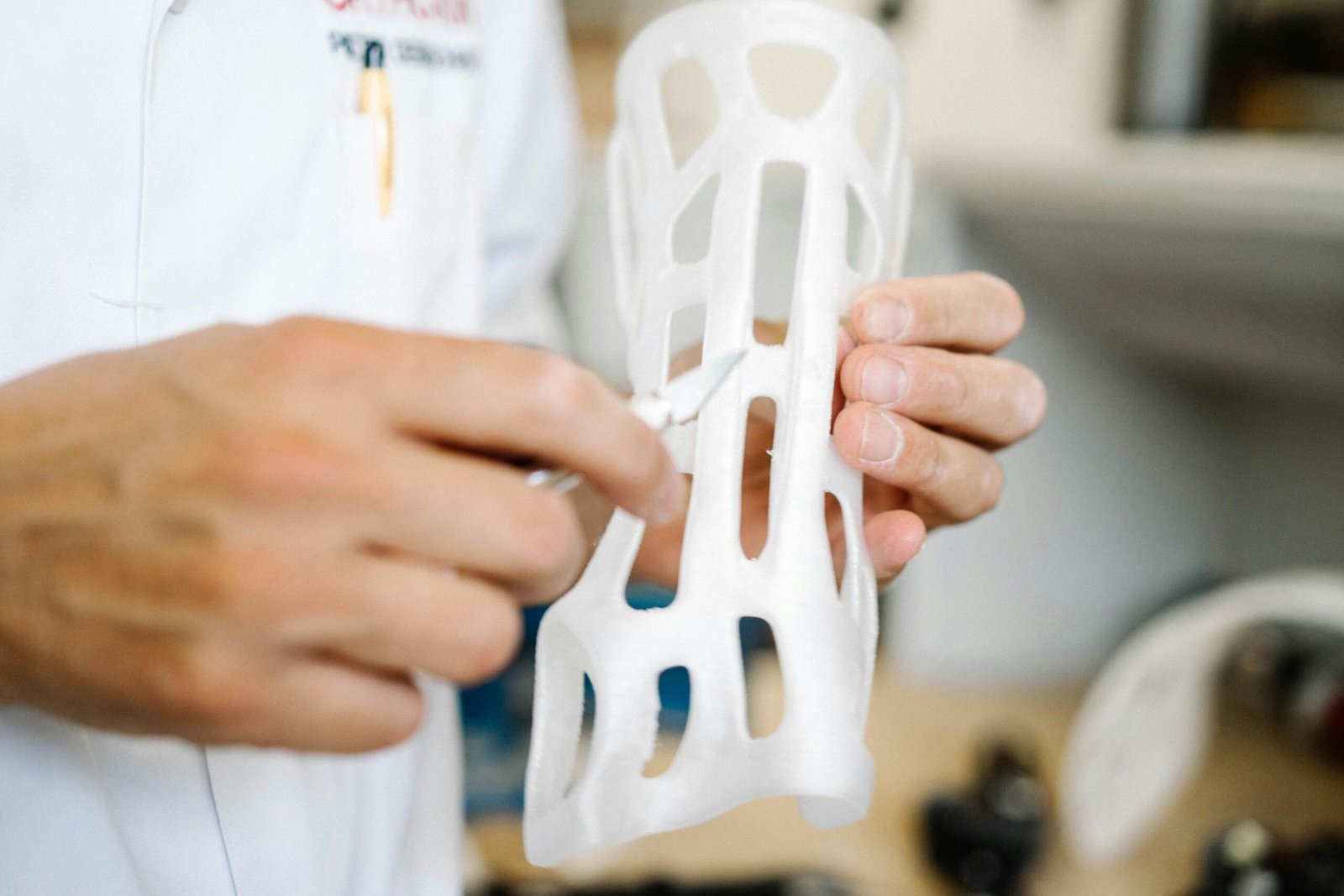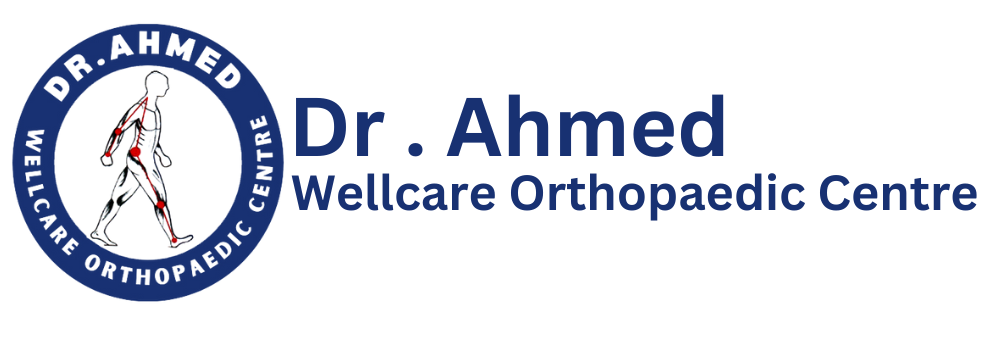Understanding Orthopedic Health: An Overview
Orthopedic health pertains to the study and treatment of the musculoskeletal system, which includes a complex network of bones, muscles, joints, ligaments, and tendons. This body system plays a critical role in facilitating movement, providing structure, and supporting various functions throughout the body. The significance of maintaining orthopedic health cannot be overstated, as it is integral to overall well-being and quality of life.
The musculoskeletal system serves as the foundation for mobility and everyday activities. Bones provide structural support, while muscles enable movement through contraction and relaxation. Joints, the points where bones meet, facilitate a range of motions necessary for activities such as walking, running, and even simple tasks like sitting and standing. Ligaments connect bones to other bones, maintaining stability and preventing excessive movement that could result in injury. Tendons, on the other hand, attach muscles to bones, enabling the transfer of force necessary for motion.
Given the essential roles these components play, it is crucial to address common misconceptions in orthopedics that may impede individuals from seeking appropriate care. For instance, many people believe that orthopedic treatment myths suggest that only athletes require orthopedic care, whereas individuals of all ages and activity levels can experience musculoskeletal issues. By debunking orthopedic myths, we can foster a better understanding of orthopedic health and encourage proactive health management strategies.
Moreover, a solid comprehension of orthopedic health aids in acknowledging the importance of preventive measures, such as regular exercise, proper nutrition, and ergonomic adjustments, to ensure musculoskeletal wellness. This foundation not only helps individuals recognize the validity of their concerns but also empowers them to engage in discussions about orthopedic care misconceptions effectively.
Myth 1: Only Athletes Need to Worry About Orthopedic Care
A prevalent misconception in orthopedics is the belief that only athletes are at risk for orthopedic issues, leading many to underestimate the importance of orthopedic health in the general population. In reality, individuals of all ages, backgrounds, and activity levels can experience orthopedic conditions that significantly affect their quality of life. Orthopedic health is not limited to those involved in sports; rather, it encompasses a wide range of musculoskeletal disorders that can arise from everyday activities.
Conditions such as osteoarthritis, tendonitis, and fractures can occur in non-athletic individuals due to factors such as aging, repetitive use, or even minor injuries sustained during routine tasks. For instance, office workers may experience repetitive strain injuries from long-term poor posture or typing, while seniors are highly susceptible to falls, which can lead to fractures and other serious injuries. These common misconceptions in orthopedics often lead individuals to ignore their symptoms, delaying necessary treatment and exacerbating their conditions.
Furthermore, neglecting orthopedic care can lead to increased risks and complications. Ignoring pain or discomfort can result in chronic conditions that may require more invasive treatments over time, ultimately hindering an individual’s mobility and overall health. It is essential for everyone, regardless of their activity level, to be aware of their orthopedic health and seek care when experiencing persistent aches or pains. Preventive measures and early interventions can significantly enhance quality of life and maintain functional independence.
In conclusion, it is crucial to debunk the myth that orthopedic care is exclusive to athletes. By understanding that orthopedic health affects all individuals, we can foster greater awareness and encourage proactive healthcare behavior among the general population.
Myth 2: Surgery is the Only Solution for Orthopedic Problems
One of the prevalent orthopedic health myths is the belief that surgery is the sole effective treatment for various musculoskeletal issues. While surgical interventions can address specific problems, they are not always the first line of treatment nor the only solution. In many cases, there are effective alternative methods that can be utilized to manage orthopedic conditions.
Physical therapy is one of the primary non-invasive treatments available. A structured physical therapy program can significantly improve mobility, strength, and overall function without the need for surgical intervention. Physical therapists employ a variety of techniques, including therapeutic exercises, manual therapy, and patient education, to help individuals recover from injuries or manage chronic pain. This approach allows patients to actively participate in their recovery, often leading to better long-term outcomes.
In addition to physical therapy, medication plays a crucial role in managing orthopedic health. Non-steroidal anti-inflammatory drugs (NSAIDs) and analgesics are commonly prescribed to reduce inflammation and relieve pain associated with various orthopedic conditions. Corticosteroids may also be utilized to manage severe inflammation. These medications can provide significant relief, making it easier for patients to engage in physical activities that further promote recovery.
Lifestyle modifications are equally important in addressing orthopedic health issues. Maintaining an active lifestyle, managing body weight, and incorporating exercises that improve flexibility and strength can reduce strain on the musculoskeletal system. This holistic approach fosters long-term wellbeing and may prevent the need for surgical procedures in many cases.
Surgery may be necessary for certain situations, particularly when conservative treatments fail or in cases of severe injury or disease. However, those considering orthopedic treatment should be aware of the multiple alternatives available. By debunking this orthopedic treatment myth, individuals can make more informed decisions about their healthcare options.
Myth 3: Osteoporosis Only Affects Women
Osteoporosis is often perceived as a health issue that predominantly affects women, leading to the common misconception in orthopedics that men are less susceptible to this condition. However, research indicates that osteoporosis affects both genders, although it is more prominently recognized in women, particularly post-menopausal women. This misconception can lead to a lack of awareness and proactive measures among men, which is essential for orthopedic health.
Statistics reveal that approximately one in four men over the age of 50 will experience an osteoporosis-related fracture, a significant number that highlights the importance of addressing orthopedic treatment myths. Risk factors for men include age, family history, low body weight, smoking, excessive alcohol consumption, and certain medical conditions such as hypogonadism, which may inhibit testosterone production. Moreover, medications like corticosteroids can also increase the risk of developing osteoporosis in both men and women.
Preventive strategies are pivotal for maintaining healthy bone density. These include engaging in regular weight-bearing exercises, ensuring adequate intake of calcium and vitamin D, and adopting a lifestyle that limits tobacco and alcohol use. Awareness regarding bone health should be promoted irrespective of gender, as bone density screening can be beneficial for men, especially those with multiple risk factors. Furthermore, debunking orthopedic myths regarding osteoporosis empowers individuals to take control of their bone health.
Ultimately, it is crucial for both men and women to acknowledge the impact of osteoporosis and address the orthopedic care misconceptions surrounding this condition. By doing so, they can make informed decisions that contribute to better bone health and minimize the risk of fractures, leading to enhanced overall well-being. Understanding that osteoporosis is not merely a women’s issue is a significant step in fostering a proactive approach to orthopedic health for everyone.
Myth 4: Common Orthopedic Conditions Among Different Age Groups
While conditions such as arthritis and osteoporosis are indeed more common in older adults, younger populations are not exempt. Sports injuries, repetitive stress injuries, and other ligament injuries can affect children and young adults. For example, young adults involved in sports can suffer from ligament tears, while people in their 20’s and 30’s can suffer from neck pain and lower back pain. This highlights the necessity for orthopedic awareness across all age demographics.
Preventative Measures and Treatment Options
Regardless of age, there are effective methods to prevent and treat orthopedic issues. Regular exercise, a balanced diet, and awareness of body mechanics are vital for maintaining musculoskeletal health. For those experiencing pain or discomfort, timely medical intervention can lead to better outcomes. Physical therapy, medication, and in some cases, surgery, can be beneficial for individuals of any age group. By dispelling the myth that orthopedic issues are exclusive to older adults, we promote a proactive approach to musculoskeletal health for everyone.
Frequently Asked Questions?
1. Q: Is it true that only older adults experience orthopedic issues?
Ans: No, orthopedic problems can affect individuals of all ages. Young people, athletes, and even children can suffer from orthopedic issues like fractures, ligament injuries, and joint disorders. Conditions like repetitive strain injuries or sports injuries are common in younger populations.
2. Q: Do all orthopedic problems require surgery?
Ans: No, many orthopedic conditions can be treated non-surgically. Physical therapy, medications, injections (such as corticosteroids or growth factor concentrates), and lifestyle changes can provide effective relief. Surgery is usually a last resort when conservative treatments fail.
3. Q: Is joint pain just a normal part of aging that should be accepted?
Ans: While joint pain can increase with age, it should not be considered an inevitable part of aging. Modern treatments like platelet-rich plasma (PRP) therapy, physical therapy, and lifestyle changes can significantly reduce joint pain and improve quality of life.
4. Q: Can orthopedic injuries heal on their own without medical attention?
Ans: Some minor injuries may heal with rest, but ignoring persistent pain or untreated injuries can lead to long-term complications. Conditions like fractures, torn ligaments, or cartilage damage require proper medical diagnosis and treatment to prevent worsening of the injury.
5. Q: Is it true that if you can walk, your injury isn’t serious?
Ans: Not necessarily. Some injuries, like stress fractures or ligament tears, may still allow you to walk, but they can worsen over time without proper care. Walking should not be considered a sign that an injury is minor.
6. Q: Do orthopedic specialists only treat athletes or active individuals?
Ans: No, orthopedic specialists treat a wide range of patients, from children with congenital issues to elderly individuals with degenerative conditions. Orthopedic care is for anyone experiencing bone, joint, or muscle problems, regardless of activity level.
7. Q: Are over-the-counter painkillers enough to manage chronic joint pain?
Ans: Over-the-counter painkillers may provide temporary relief, but they do not address the root cause of the pain. Chronic joint pain often requires more targeted treatments like physical therapy, joint injections, or regenerative therapies to manage the underlying condition effectively.
8. Q: Is physical therapy only necessary after surgery?
Ans: No, physical therapy can be an effective treatment for many orthopedic issues even without surgery. It can help restore mobility, strengthen muscles, and reduce pain for conditions like arthritis, back pain, or sports injuries, often preventing the need for surgical intervention.
9. Q: Does osteoporosis only affect women?
Ans: While osteoporosis is more common in women, men can also develop this condition, especially as they age. Both men and women should take preventive measures like weight-bearing exercises, calcium intake, and bone density screenings to maintain healthy bones.
10. Q: Is rest always the best solution for an orthopedic injury?
Ans: Rest is important, but too much rest can sometimes worsen certain conditions. Active recovery, such as gentle movement or physical therapy, is often more beneficial for promoting healing in orthopedic injuries by keeping joints flexible and muscles strong.









